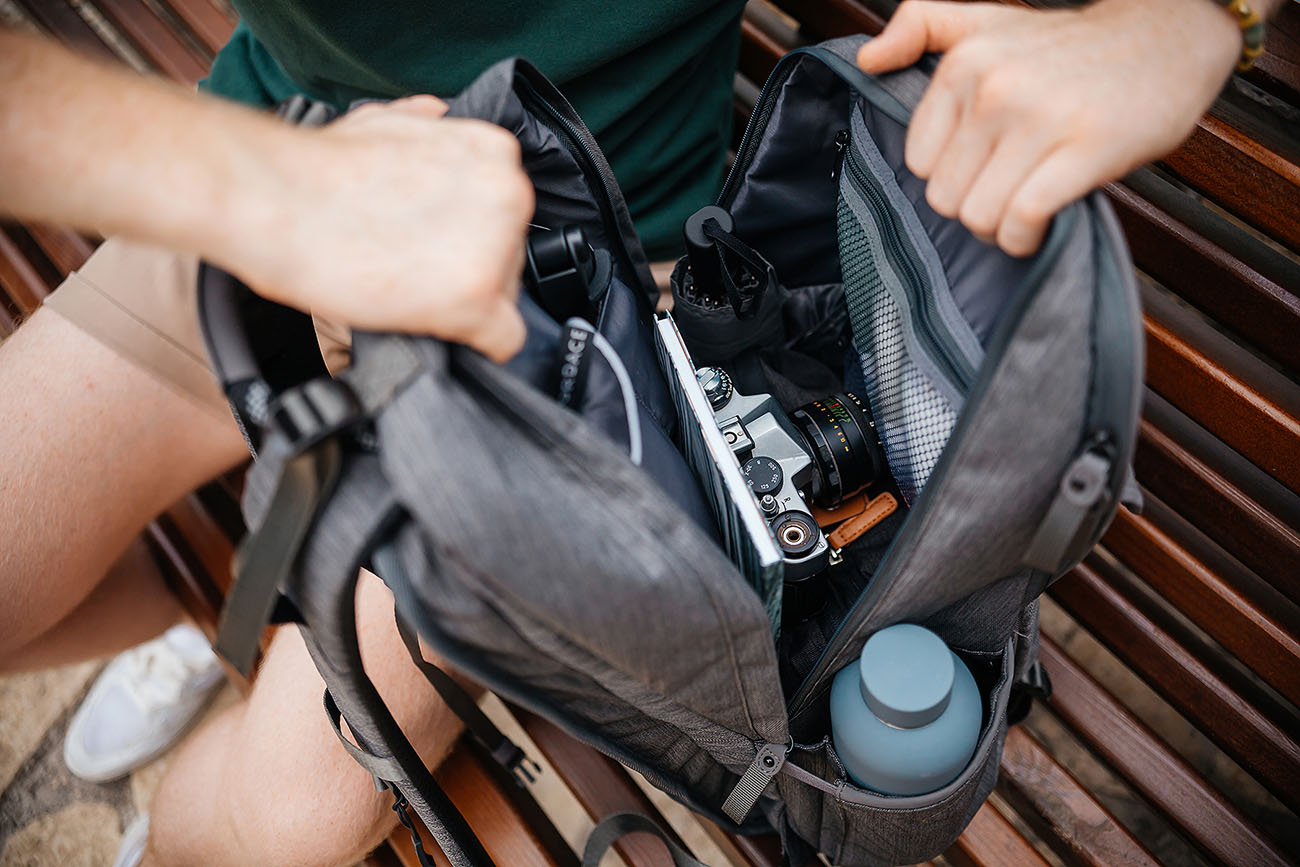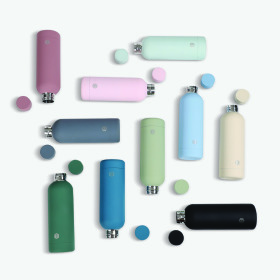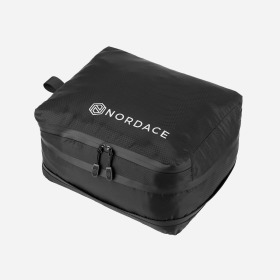Packing Lists
What to Pack for A Trip to Europe – Complete Guide
Wondering what to pack for a trip to Europe Here is a helpful Europe packing list to ensure your trip to the most diverse continent in the world will be one to remember. This guide offers general information about what type of luggage to choose for a trip to Europe, what are the essentials and must-haves you should always bring with you, and what to wear in spring, summer, fall, or winter.
What to Pack for A Trip to Europe
Europe is a place you would never get bored of. Home to some of the most fascinating cultures in the world, with unique architecture, historic buildings, and monuments, sandy beaches, awe-inspiring landscapes and wonders that take your breath away, Europe hosts a lot of activities for any type of traveler. But what makes it a really unique destination is the proximity of its countries. European countries are so close to each other that you can easily hop a plane, bus, or train and travel from one to another in a short period of time.
The most visited European destinations are Greece, Italy, Spain, France, Switzerland, Germany, and the United Kingdom.
No matter the European country you plan to visit, get ready to explore with our complete packing guide for Europe.
Best Luggage for Traveling in Europe

Let’s start with probably the most important step of the packing process – the best luggage for traveling in Europe. Want to travel light? Awesome! If you’re planning for one or two-week long adventure, a backpack will fit all your essentials. Packing less but smarter allows you to move freely, cut unnecessary baggage fees, save time since you don’t have to wait for checked luggage (and never worry about lost luggage) and travel comfortably when getting on and off planes, buses, and trains at different spots. By the way, the train and bus networks are super-efficient when you want to switch destinations in Europe.
The ideal bag for a trip to Europe is the 24L volume Nordace Comino Travelpack. It is spacious enough to hold all your essentials, including clothes and accessories, fits in the overhead bin or under the seat, and provides superior comfort thanks to its ergonomic support system with padded shoulder straps and a stabilizing sternum strap. Featuring the pack smart system specific to all Nordace bags and backpacks, it maximizes the packing capacity so you can pack more. The organizational pockets are life changing – the backpack includes a clear mesh pocket, RFID-blocking card slots, cable loops, a water bottle pocket, and a hidden pocket on a back panel for extra safety. Plus, the gear loops at the bottom allow you to easily carry accessories such as a tripod or a heavy jacket.
Nordace Comino Travelpack is crafted from high-quality, durable, and water-resistant vegan materials to withstand wear-and-tear and the challenges of unexpected drizzles.
When packing light, choose accommodation that has a washing machine and offers laundry facilities or consider clothes crafted from materials such as Merino wool which require less laundry and take up little space in your luggage.
Pro tip:
If you want to make the most of your luggage space, invest in packing cubes/organizers – they will allow you to pack more into less space and keep you organized on the go.
What to Pack for Europe – The Essentials

Whatever your destination, these are the must-have items when traveling to Europe.
Documents
EU citizens can travel with their identity card or passport. As a non-EU citizen, you need a valid passport. If you intend to travel to Europe by road or you want to rent a car at your destination, your driving license is mandatory.
Money
The Euro (EUR) is the currency used in 19 EU countries – Austria, Belgium, Cyprus, Estonia, Finland, France, Germany, Greece, Ireland, Italy, Latvia, Lithuania, Luxembourg, Malta, the Netherlands, Portugal, Slovakia, Slovenia, and Spain. The rest of the countries still use their national currency.
When traveling to Europe, make sure you bring both your cards and some cash. In cities, cards are always accepted, but cash might be necessary when navigating less popular areas.
Travel Insurance
Not mandatory, but always good to have, travel insurance that can handle medical expenses, too, offers you peace of mind.
Universal Adapter and Power Bank
Since different European countries use different outlets, a universal travel adapter will be essential for your trip.
Medicines
Throughout Europe, you’ll find plenty of pharmacies. However, you can bring painkillers, diarrhea medicine, and motion sickness medicine.
Toiletries
- Shower get
- Deodorant
- Shampoo
- Toothbrush
- Toothpaste
- Sunblock
- Lip balm
- Moisturizer
- Mosquito repellent
Tech
- Laptop – if you’re a digital nomad
- Camera
- Action camera
- E-reader
- Chargers
- Power bank
- Cables
What to Wear when Traveling to Europe – How to Dress Like a European

We know. Packing clothes for different activities and environments seems impossible. Especially when you travel light. The first thing you should consider when choosing your European trip outfits is the season and the region. Weather in Europe might differ from one region to another. And since you’ll probably visit multiple destinations, you’ll encounter mixed weather conditions, and you must pack accordingly to be prepared for any situation.
To help you understand better, here’s what you should know about the climate in Europe:
- Western Europe
This region is characterized by an Oceanic climate with unpredictable weather, mild, wet winters and humid, cooler summers.
- Eastern Europe
The winters here are characterized by extremely low temperatures in some regions, while in other summers are extremely hot. Spring and fall are usually nice, with moderate temperatures and rain.
- Northern Europe
The climate here is a mix of oceanic and continental weather, with cooler temperatures.
- Southern Europe
Is characterized by the Mediterranean climate, with hot, dry summers and mild, wet winters.
To help you find the perfect balance between comfort and style and blend in with the Europeans, follow the tips bellow:
- The European fashion can be defined in two words – style and comfort. Choose nice and comfortable clothes; Europeans care about their appearance and they look put together all the time.
- Europeans dress up for dinner so don’t forget to pack casual clothes for evenings at the restaurant.
- Always choose clothes that fit you well. Fashion in Europe is all about the fit.
- Wear neutral colors like beige, gray, black, blue, or navy blue. White is a great option when visiting the beaches. Plus, when choosing neutral colors, you can easily mix and match them to create endless travel outfits.
- Leave uncomfortable shoes at home and bring comfortable, but nice shoes – they are the absolute must-have when wandering the cobblestone streets.
- Pack for the weather. In winter, dress in layers.
- Always choose versatile pieces of clothing that you can wear for different situations.
- Choose your outfits depending on the planned activities.
Pro Tip:
Blending in with the locals is important, especially when visiting big European cities as this will make you less of a target for scammers and pickpockets.
What to Wear in Europe – Packing List for Her
Summer Checklist
- Short sleeve tops
- Tank tops
- Casual shirt
- Nice top for evenings out
- Skirt
- Summer dress
- Linen dress
- Capri pants
- Sandals
- Flip-flops for the beach
- Chic & comfortable sneakers
- Sun hat
- Sunglasses
- Socks
- Underwear
- Pyjamas
- Swimwear
Fall & Spring Checklist
- Long-sleeve tops
- Blazer or trench coat
- Jacket
- Rain-jacket
- Jeans
- Cardigan or sweater
- Scarf
- Stylish sneakers or boots
- Socks
- Underwear
- Pyjamas
Winter Checklist
- Long-sleeve top
- Thermal clothing
- Fleece/Sweater
- Winter jacket
- Simple black pants
- Mittens
- Warm knitted cap/beanie
- Scarf
- Boots
- Socks
- Underwear
- Pyjamas
What to Wear in Europe – Packing List for Him
Summer Checklist
- T-shirt
- Shirt
- Casual shirt for evenings out
- Chinos
- Shorts
- Comfortable shoes
- Sandals
- Flip-flops for the beach
- Sun hat
- Sunglasses
- Socks
- Underwear
- Pyjamas
Fall & Spring Checklist
- T-shirt
- Long-sleeve blouse
- Button down long-sleeve shirt
- Jacket
- Rain-jacket
- Jeans
- Comfortable shoes
- Socks
- Underwear
- Pyjamas
Winter Checklist
- Long-sleeve blouse
- Thermal clothing
- Fleece/Hoodie
- Winter jacket
- Base layer bottoms
- Simple black pants
- Mittens
- Warm knitted cap/beanie
- Scarf
- Boots
- Socks
- Underwear
- Pyjamas
Wherever the road takes you, the success of your adventure will be highly influenced by your level of preparedness. We hope our guide will help you figure out what to pack for a trip to Europe to stay comfortable and enjoy your time to the fullest. Choose your backpack, pack, and go!







